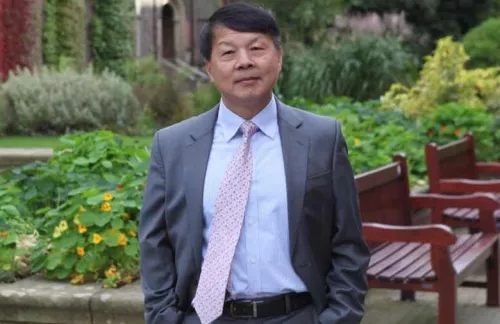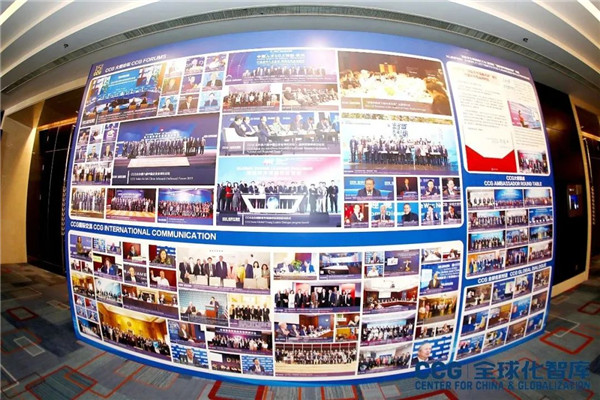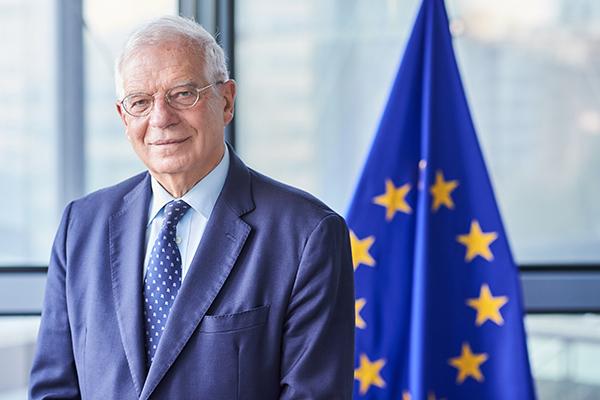Zhou Xiaoming: A Tale of Two Cities
February 07 , 2025
By Zhou Xiaoming | Senior fellow at the Center for China and Globalization(CCG), Former Deputy Permanent Representative of China’s Mission to the UN Office in Geneva.
Washington and Beijing differ in many aspects: area, population and national income per capita, to mention a few. For the world at large, however, what really distinguishes one from the other is their vision for the world and their approach to each other.
Washington believes there is a pecking order for the nations of the world. As former U.S. Secretary of State Antony Blinken put it, you are either on the table or in the menu. And the U.S. undoubtedly ought to sit at the head of the table if you ask Washington.
Indeed, Washington is bent on calling all the shots in the world, convinced that ruling the world is Uncle Sam’s God-given birthright. And it will not tolerate any challenge to its globally dominant position. As a “ruthless” superpower (the words of Professor John Mearsheimer at Chicago University), it shows no mercy for the countries that it sees threatening its global dominance, be it Germany, Japan or the Soviet Union in the past, or China today.
After taking office, Joe Biden went around asserting U.S. global leadership (read hegemony). In a speech at the Brookings Institution in early December, he again proclaimed, “If we do not lead the world, what nation leads the world?”
Washington has spared no effort to prolong its global hegemony. Despite heavy pressure from the Global South for years, for instance, it has refused to relinquish its de facto veto power at the World Bank and International Monetary Fund as well as its control of the post of the president of the World Bank.
Dec. 6 saw Washington trying to rid the U.S. of the straightjacket of WTO rules when it informed the World Trade Organization that WTO’s dispute settlement findings “will not alter a Member’s views on the fundamental importance of essential security measures. No Member would or can be expected to withdraw a measure that it considers to be necessary to protect its essential security interests.” At a time when even garlic was deemed a national security threat by U.S. lawmakers, Washington wanted a free hand to weaponize trade.
President Donald Trump is also obsessed with returning the world to a bygone era in which Washington called the tune. His call for Canada to become America’s 51st state and his proposal for the U.S. to buy Greenland from Denmark are nothing short of hegemony in action reminiscent of U.S. expansionism at the turn of the last century. In a bid to sustain the U.S. dollar hegemony, Trump also threatened BRICS nations with a 100 percent tariff on their imports.
Further, Trump expects his Make America Great Again project to be realized at the expense of other countries. He tried to coerce China, Mexico and Canada into paying for America’s illegal immigration and drug crises. He also demanded that Panama exempt U.S. navies and companies from fees of passage through the Panama Canal. In addition, he suggested that as a condition of U.S. continued support for Ukraine, other NATO members must hike military spending to 5 percent of their economic output, a move akin to occupying the driver’s seat while refusing to ensure the safety of the passengers. Washington clearly abhors giving up its domination of NATO. Its own defense budget amounted only to 3.1 percent of its U.S. GDP in 2024.
In contrast to Washington’s hegemony, Beijing sees the world as a community with a shared destiny, with all countries on a same big ship, rather than more than 190 small boats. It deems the development of other countries as an opportunity and is happy to share business opportunities. As part of its deep commitment to the United Nation’s goal of leaving no country behind, China has, through the Belt and Road Initiative and others, invested more than $1 trillion in developing countries. Apart from sharing its Covid-19 vaccines at the height of the pandemic, when Washington was hoarding the medicine, Beijing moved to zero-tariffs on all imports from the world’s least-developed countries.
Also, Beijing maintains that all countries are the collective masters of the world and that each country, big or small, has an equal right. It champions the democratization of international affairs and strives, as Rwandan President Paul Kagame put it, to bring all the countries to the negotiating table so that a better world may be designed, built and shared collectively.
Closed vs. open world
Washington seeks to create a fractured and semi-closed world. The Biden administration classified countries as democracies or non-democracies based on its own criteria, pitting one group of countries against another.
In economy and trade, Washington’s Clean Energy Act keeps the U.S. market largely closed to the rest of the world, including its Western allies. Washington’s exclusive trading blocs, such as the Chip 4 semi-conductor alliance with Taiwan, Japan and South Korea and the Critical Minerals Buyers Club have dismantled the globally integrated supply chains that had served the world well and shut off access for non-members.
Meanwhile, Trump’s plan to impose universal tariffs will prove to be a game changer. It means a high wall of tariffs will be erected that will close the U.S. market to many products from the rest of the world. More important, the move is an attack on the global order based on free trade — a throwback to the days when the law of jungle prevailed before the birth of the Bretton Woods system.
Washington has also created barriers for the movement of people between the U.S. and China. It believes that any increased flow of tourists and business people would favor China over the United States.
In December, the U.S. State Department upgraded its travel advisory for China, urging Americans to “exercise increased caution” over what it says is China’s “arbitrary enforcement of local laws, including in relation to exit bans.” But the fact is that more than 29 million foreigners visited China in the first 11 months of 2024 without any instances that Washington referred to. Also in December, the South China Morning Post reported that many Chinese exhibitors were denied U.S. visas with no reason given, despite their being invited to the Consumer Electronics Show in Las Vegas.
At present, direct flights between destinations in China and the U.S. number about 100 a week, or about one-third of the 2019 level, despite huge unmet demand and Beijing’s repeated prodding for more. The cause? The U.S. Department of Transportation limits the number of Chinese flights because of what it says unfair competition because Chinese airliners are permitted to fly through Russian airspace cutting total distance.
In sharp contrast, Beijing embraces globalization and is pushing for an open and inclusive world. It continues to open China wider to the world. As it aligns itself with the world’s highest economic and trade rules, it is building the world’s largest free trade port in the country’s southernmost province of Hainan. What’s more, all restrictions on foreign investment in the manufacturing sector have been removed. Tellingly, Tesla operates its largest factory in Shanghai.
China holds the world’s sole import expo annually, aiming to increase imports of foreign goods. As a result of its outreach effort, more than 200 U.S. companies and trade associations showcased their products under the auspice of U.S. Department of Agriculture at the seventh installment of the expo in November. Moreover, Beijing welcomes foreign tourists and business people alike with open arms. On Dec. 17, China expanded — mostly unilaterally — visa-free travel to 10 days for the passport holders of 54 nations, including the U.S.
Confrontation vs. cooperation
The approaches of Washington and Beijing toward each other are also miles apart. Washington perceives China as the principal threat to its hegemonic power and watches Beijing’s every move and development with suspicion and fear. In its obsession with beating China, Washington has taken to confronting the Asian country in practically every field and domain, including in ideology, geopolitics, economy, military, technology and science.
To appreciate Washington’s hostility toward Beijing, one need look no further than the number of legislative bills designed to keep China down that have been introduced or passed by the U.S. Congress. Since the beginning of the 118th Congress in 2023, more than 576 such bills have been introduced. In what billed as China Week in September, the House of Representatives passed 25 pieces of legislation targeting the country.
Decision-makers in Washington, schooled in zero-sum games, see everything through a two-dimentional prism of who wins and who loses. China’s growing prosperity thus has become a threat to America’s global dominance.
Unlike Washington, Beijing is loath to confront. Instead, it seeks cooperation for the benefit of the two countries and the world at large. It has been telling Washington that the Pacific region is large enough for both and that China has no intention of replacing the U.S.
Beijing seems to walk the walk. It has been focusing on developing its own economy, rather than taking on Washington. In stark contrast to Congress, Chinese legislators have yet to enact a single U.S.-related economic law. Any actions by Beijing toward Washington have been taken in self-defense, not to provoke. In the face of Washington’s continual provocations and attacks , Beijing has largely held back, opting to exercise restraint and hitting back only when absolutely necessary.
Clearly, the tale of Washington and Beijing is about stark contrasts and extremes, about the perpetrator and the victim, about the struggle between the oppressor and the oppressed and between the aggressor and the defender.
From China-US Focus, 2025-1-28
Topical News See more






